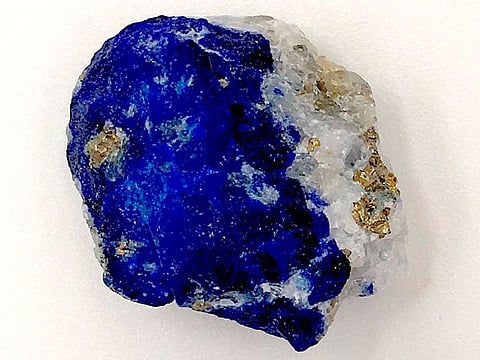Medieval woman’s hidden art career revealed by blue teeth
The German nun was likely a painter and scribe of religious texts

Washington: Anita Radini, an archaeologist at the University of York, in England, spends a lot of time looking at tartar. Really old tartar.
Tartar, or dental plaque — that film of bacteria that feels like sweaters on your teeth — contains a wealth of information about what long-dead individuals encountered in their daily lives. Radini has seen all sorts of things trapped in it: food particles, textile fibres, DNA, pollen, bacteria and even wings of tiny insects.
But several years ago, when studying the dental plaque of a nun from medieval Germany, Radini saw something entirely new: particles of a brilliant blue. She showed the findings to Christina Warinner, another tartar expert, who was shocked.
“They looked like little robins’ eggs, they were so bright,” said Warinner, group leader of archaeogenetics at the Max Planck Institute for the Science of Human History in Germany. “I remember being dumbfounded.”
The scientists put together a multidisciplinary team of scholars and set out to unravel the origins of this blue dust. The results, described in a paper published Wednesday in Science Advances, far exceeded the team’s expectations.
The particles, it turned out, were of ultramarine pigment, the finest and most expensive of blue colourings, made of lapis lazuli stone from Afghanistan. The German nun with the pigment in her teeth — B78, as she is known in the archaeological literature — was likely a painter and scribe of religious texts. And she must have been highly skilled to have been entrusted with such a rare powder, the researchers said.
The finding upends the conventional assumption that medieval European women were not much involved in producing religious texts. “Picture someone copying a medieval book — if you picture anything, you’re going to picture a monk, not a nun,” said Alison Beach, a historian at Ohio State University, and an author on the study.
The skeleton of B78 dates to sometime between 997 and 1162AD The nun was probably 45 to 60 years old when she died, and was buried in an unmarked grave near a women’s monastery in Dalheim, Germany. Historians know little else about the site, because almost all of it was destroyed by a fire in the 14th century.
Radini first noticed traces of blue when she immersed a sample of B78’s tartar in a weak acid solution. Scientists use this method to dissolve calcified tartar, so they can study any remaining food, pollen or other particles.
Most scientists would have walked away and let the solution dissolve overnight. But Radini stayed and watched for a bit, to make sure the process was going properly. Under the microscope, she was surprised to see blue particles tumbling out of the tartar’s matrix. By morning, the colour was gone.
Mineral pigments tend to lose their colour in acids, so Radini had to figure out a way to extract and preserve the blue pigment. The method that worked best involved putting the plaque in a bath of ultrapure water and using high frequency sound waves to break apart the matrix.
Through a series of experiments, the team identified the particles. Monica Tromp, a microscopist at the Max Planck Institute for the Science of Human History, used scanning electron microscopy to show that the pigment had all the chemical elements of lapis lazuli. Roland Kroger, a physicist at the University of York, used spectroscopy to confirm the structure of two minerals, lazurite and phlogopite, that are only found together in lapis lazuli. That was “a smoking gun,” Warinner said.
At the time, blue pigment “was as, or more, valuable than the gold applied to manuscripts,” Beach said. Only 5 per cent of the lapis lazuli used in the production process is converted into pigment, and the stone would have had to travel through thousands of miles of trade routes to reach Europe.
The pigment likely ended up on the woman’s teeth as she used her mouth to shape her paintbrush. The researchers found ultramarine layered throughout B78’s dental plaque, which suggests she painted many books in her lifetime.
“We struggle to find sources reflecting women’s lives in the Middle Ages that aren’t filtered through men’s experiences or opinions about what women’s lives should have been,” Beach said. “Now, we have a direct piece of evidence about what this woman did on a day-to-day basis — all because they didn’t brush their teeth.”
“I have a new relationship with my Sonicare now.”
— New York Times News Service
Sign up for the Daily Briefing
Get the latest news and updates straight to your inbox



